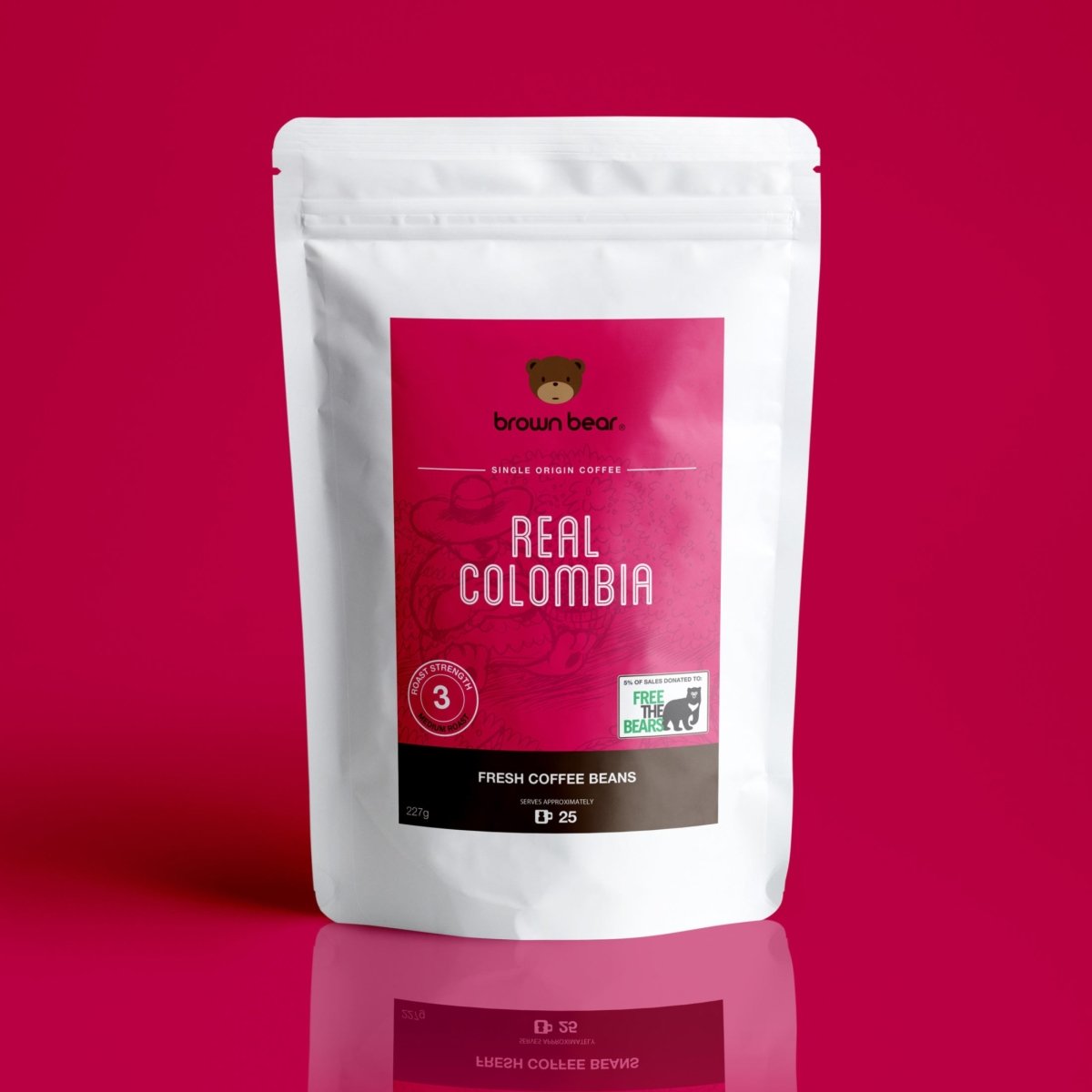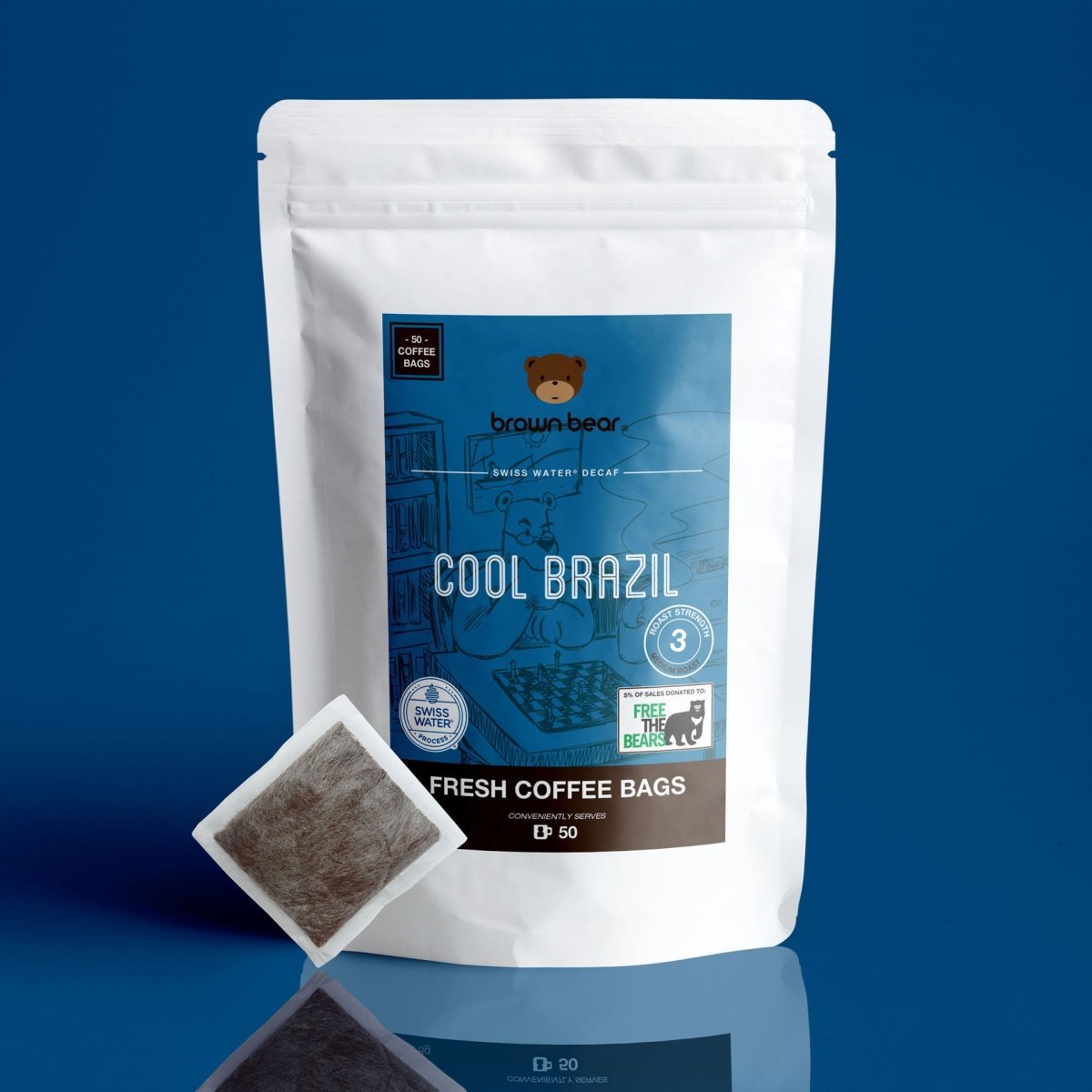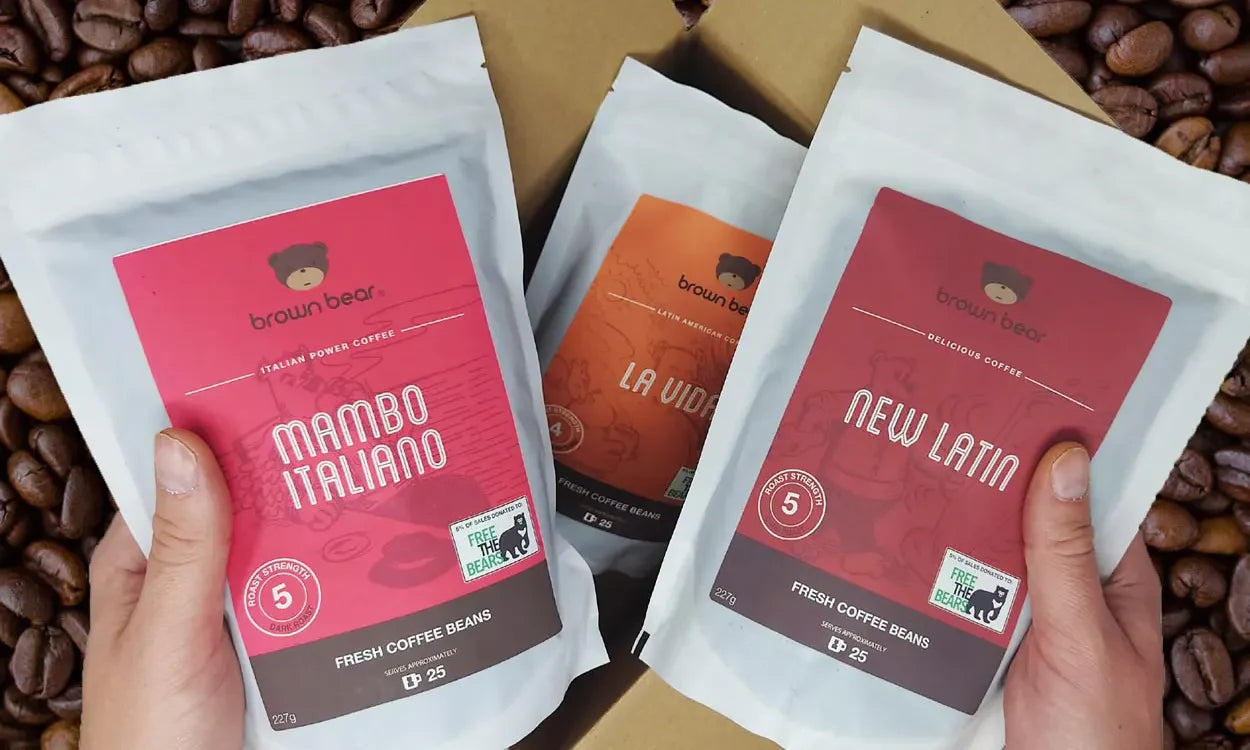The mass consumption of coffee which began in the 1800s went hand in hand with a growing but chaotic world supply. Until 1690, Arabia had supplied all coffee to the world. Then for a century and a half the West Indian colonies of Spain and France - Jamaica, Haiti, Guadeloupe, Puerto Rico, and Cuba - were predominant.
By around 1830, the Dutch colonies of Java and Sumatra wrested supremacy from the West Indies, and Amsterdam became the world coffee capital. India and Ceylon, financed by millions of pounds from London, made bids in 1850 to dominate the world coffee market, but could not shake Holland loose.
In the middle of the nineteenth century, the dreaded coffee disease, Hemileia vastatrix, struck Asia and suddenly changed the source of supply of the much-sought-after commodity. Unaffected by all the sprays and insecticides the planters used, the blight swept over Ceylon, India, Java, Sumatra and all the producing areas of Asia, and within a few years completely wiped out coffee growing there.
Brazilian Coffee
This left the field wide open for Brazil, and by the end of the nineteenth century, Brazil achieved the dominant role in world coffee production, a position it still holds today. Brazil’s enormous annual increases in production helped shift coffee from a luxury beverage consumed by the aristocracy to the drink of the common man.
When Francisco de Melo Palheta escaped to Brazil in 1727 with his bouquet containing fertile coffee seedlings, he resigned from the Army and started to grow coffee on a riverbank farm. But, the progress of coffee cultivation in Brazil was slow during most of the eighteenth century. Sugar for the European market was the major crop until Napoleon planted sugar beets in Europe, ending the Continent's dependency on imported sugar.
By this point Europe needed more and more coffee and the United States was beginning to demonstrate the demand which was to make it in world's largest consumer of coffee. Brazil's soil and climate were ideal for coffee cultivation and there was a large amount of slaves used for coffee cultivation.
Perdro, Emperor of Brazil, the country's last constitutional monarch, had an extensive network of railways and roads constructed that connected the inland plantation areas to the ports. Previously coffee had been subjected to an arduous ox-cart journey to the sea; after the network was completed, the trip took only a few days and Brazilian coffee could compete on a worldwide basis.
When Pedro was obliged to journey to Europe for medical attention in 1888, he left his daughter Isabel as regent who, prompted by an act of Parliament, freed Brazil's 700,000 slaves. The planters and army officers rose against the monarchy, and when Pedro II returned in 1889 the monarchy fell. Pedro and his family were forced into exile.
By this point, Brazil had stepped in to fill the gap in coffee supplies created by the loss of Asian coffee to Hemileia vastatrix. But Brazil's new pre-eminence also brought troubles of its own. Most of the emancipated slaves gravitated to the cities, and the coffee industry suffered devastating labour shortages for the first few years thereafter. Production dropped 50 percent in many areas. But, emigrants from Italy, Germany, Portugal, Spain, and central Europe, encouraged by the Brazilian government, took the place of the former slaves, and probably saved Brazil's coffee industry.
These colonists, or colonos as they were called, were industrious wage earners who, as soon as they were able, bought some land and started small plantations, or fincas, of their own. The flood of colonos continued until 1900, when the world price of coffee fell and the planters could not make good the wages they had promised their workers.
When foreign governments threatened to stop the flow of immigrants to Brazil, the Brazilian government was forced to lend enough money to the planters to pay the colonos. The decline in the world coffee price also caused the milreis, Brazil's unit of currency, to sink to one-third of its previous value. The federal government, aided by the Rothschild banking empire, stabilized the milreis. But, the pattern had been set for a recurring problem of the Brazilian coffee industry, a problem felt even more keenly by a country with a one-crop economy like tum-of-the-century Brazil.
Spurred on by previous years of growth and rising coffee prices, coffee growers had planted vast amounts of new acreage. Ripening fruit burdened the trees. Unpicked, it began to dry on the trees and fall to the ground. Hordes of colonos, fed up with the fluctuating nature of the coffee business, fled the plantations for their home countries. The giant warehouses in San Francisco, New Orleans, New York, Liverpool, Hamburg, and Le Havre were filled to overflowing with green coffee.
In 1905, the already low price of coffee -5 cents a pound - was poised for a drop to zero should the harvest of 1908, estimated at 20,000,000 bags or over 80 percent of the entire world's production, go to market. With 90 percent of the total wealth of the country invested in coffee, Brazil was hovering on the brink of economic destruction.
Prices were artificially maintained at profitable levels and this encouraged further over planting and led to the appearance of amateur coffee planters who lowered the quality of Brazilian coffee. Finally, the New York stock market crash of 1929 put an end to the loans used by the Institute to purchase crops. The Institute crumbled in 1931, leaving Brazil with 25,000,000 bags of coffee that were unmarketable at any price.
To deal with this latest crisis, the federal government created the Departmento Nacional do Cafe, which systematically destroyed millions of sacks of coffee for over ten years, until 1944. The burning centres were called pilhars de incineracão. More than seventy-five of them worked steadily for over eight years. Huge, roofless sheds, they encompassed burning areas each nearly a half mile square. Thousands of tons of beans were mixed with heavy crude oil and set on fire and burned with a whining moan and exuded black and reddish flames.
In the wake of these incinerations, farmers fled the land and fazendas went to seed. First weeds, then underbrush, vines, and trees crept over the deserted plantations. Almost 1,500,000.000 coffee trees ceased bearing fruit.
In the midst of World War II, coffee prices started rising slowly and farmers realized that coffee would once more be in demand after the war, they began returning to the land-clearing, planting, fertilizing and irrigating. The Brazilian Coffee Institute supervised the opening up of new lands for planting and regulated the production on the old. The Instituto Agronomico de Campinas was formed to discover new varieties of hardy, fruitful coffee plants while aiding the farmer in all phases of agricultural production.
The state of São Paulo has been the hub of the Brazilian coffee industry for almost a hundred years. Comprising only 3 percent of Brazilian territory, this state accounts for one-third of the country's gross national product. In an attempt to avoid the earlier pitfalls of overdependence on the coffee crop, São Paulo diverted the money it has made from coffee into other fields of activity: industry, science, art, education, and communications. This is the pattern being followed by most modern coffee states in and out of Brazil.
Colombian Coffee
While the history of coffee growing in Brazil has often been one of overproduction, the story of Colombian coffee has been one of constant struggle to overcome a hostile topographical ambiance. Colombian beans are often richer than many other beans, and they provide a valuable, sought-after addition to any coffee blend. Colombia lies within the coffee belt, between the tropic of Cancer and the tropic of Capricorn, and is favoured with high altitude and ample rainfall, conditions necessary for coffee production.
But the Andes mountains, whose slopes are dotted with coffee plantations or fincas, present the Colombian coffee grower with some of the most formidable challenges to farming, transportation, and communication in the industry. The steep mountainsides discourage the use of machinery, so that work must often be done by hand, and block one of the prime requisites of commercial farming, which is easy access to exporting ports.
Running in a north-easterly direction across Colombia, this enormous range with fissures, spurs, peaks, and valleys entrap the country in a maze of almost insurmountable barriers. An early Spanish explorer described the land as fit for "madmen, eagles and mules." Nevertheless, the Spaniards, who ruled for two centuries, penetrated the interior to search for emeralds and gold, and the present location of Colombia's cities reflects their proximity to the old mineral deposits.
To penetrate the inland barriers two choices were open to the early travelers: muleback or foot. Most chose the latter method, since the treacherous, narrow trails often precipitated animal and man to their deaths in gorges below. A typical trip involved crossing many rivers, valleys and ridges. While numerous rivers travel down the slopes of the Andes, all but two flow the wrong way.
Despite continued isolation of the coffee regions production slowly increased. Many farmers, unlucky with other crops, switched to coffee. Toward the middle of the nineteenth century three important events coalesced to inject the Colombian coffee industry with a new vitality. World consumption had more than doubled between the beginning and middle of the century. Prices, responding to increased demand, were at their peak, and provided a powerful incentive to grow coffee.
In 1824 the first steamboat toiled up the Magdalena River. This technological breakthrough triggered a series of related transportation improvements, which had the effect of shrinking the awesome Andes. Regular steamboats on the river encouraged a development of trails and roads connecting the villages on the slopes along the river with each other and with the Magdalena. A railroad construction program brought the country even closer together and stimulated trade with Chile, Peru and Ecuador. Finally, the opening of the Panama Canal brought New York, London, Hamburg, New Orleans, and Le Havre within reach,
Colombia could then come into her own as the world's second great coffee producer. Colombian farmers soon found out that coffee planted in the lowlands grew plentifully and was closer to the ports, but had poor quality and brought low prices on the world markets. This zone, called the tierra caliente, they reserved for tropical fruits and vegetables. On the cool land, the tierra templada, where the altitude was between 2,000 6,000 ft., conditions for growing coffee were ideal. The cherries were more flavourful, stronger and had more body. These qualities commanded the highest prices in the coffee-drinking countries.
Hundreds of thousands of coffee seedlings were planted and by 1890 coffee became Colombia's chief export. The industry flourished and articles and pamphlets abounded with instructions for planting and processing. At the peak of this boom, in 1899, Colombia became embroiled in a bitter and bloody revolution. Farmers became soldiers and the cherries died on the trees. Overproduction in Brazil glutted the markets and coffee prices tumbled. These conditions led to a wholesale abandonment of the fincas. But, the revolution was over in 1903 and steps were taken to revitalize the coffee industry again.
Since then the industry has strengthened and prospered at a much greater rate than that of Brazil, though accounting for a much smaller proportion of world coffee production. This rise has been paralleled by a constantly improving transportation network: new railroad lines, boats for the smaller streams, highways and roads, aerial railways to cross the gorges, and airline travel.
Colombia's coffee industry is dominated by the small farmer. Over 80 percent of the fincas are owned and run by a single family caring for less than 5,000 trees. These small mountainside plantations are usually far from the cities and present an arduous and sometime dangerous life. Tilling the slopes by hand is not easy. Most of the coffee is harvested twice a year with the farmer, his family, and neighbours working as long as there is light. Since harvests occur during the rainy season, drying the beans, which requires the sun, becomes more complicated. In fact, this negative agricultural circumstance raises production costs of Colombian coffee by 15 percent.
By contrast, the Brazilian harvest comes once a year; all cherries, ripe and unripe, are picked at the same time, and the unripe ones mature during the dry season. Brazil and Colombia still dominate the world's coffee markets and have done so overwhelmingly through the 1950s and 1960s. But, some of the old coffee-producing countries are again active, and new countries are making inroads on the supremacy of Brazil and Colombia.

































